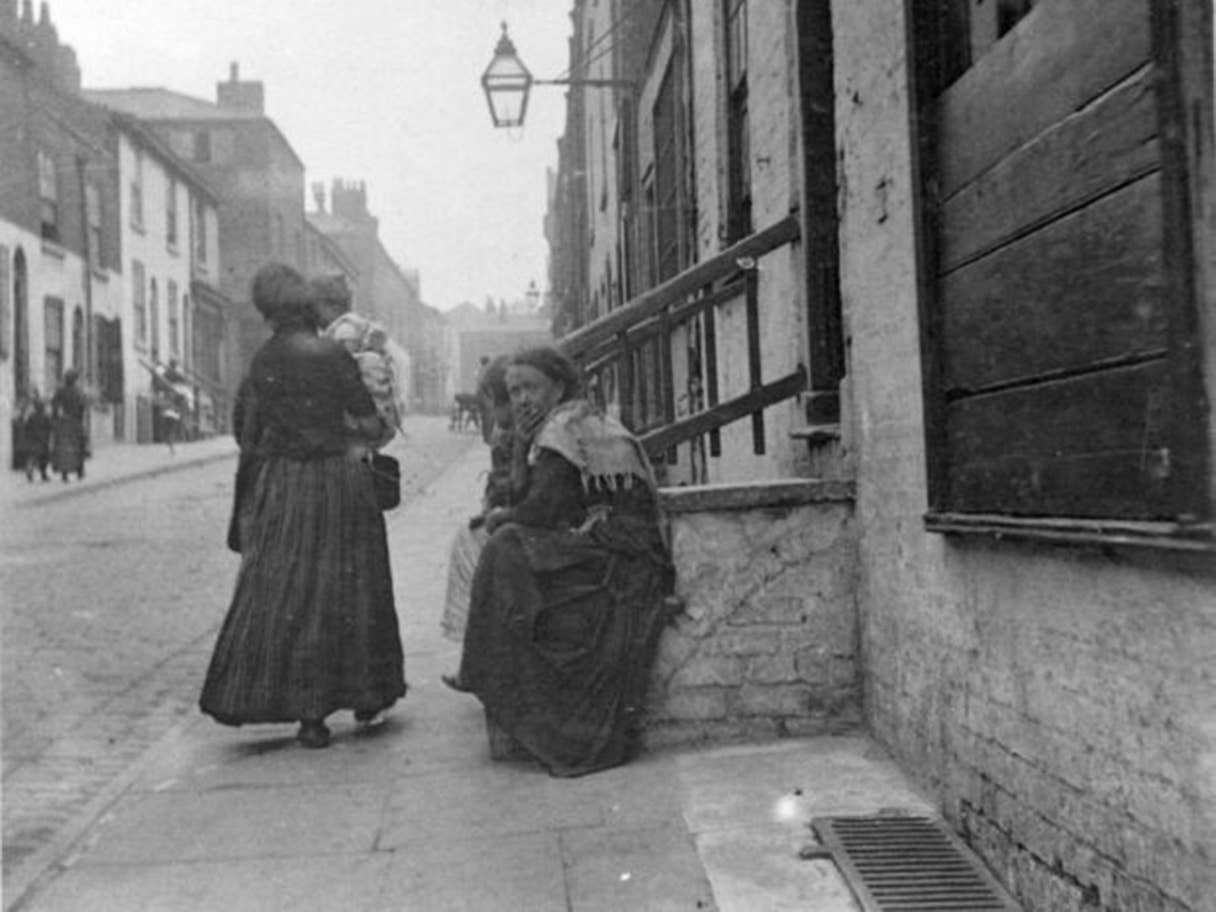
This weekend, whilst sat in my back yard in my recently patched-up hot tub, I started reading a book called ‘Gang Wars’ by Peter Walsh, an excellent account of the drug wars that erupted in Manchester in the mid-1980s.
Like most accounts of history, Walsh begins his work by looking into the past, perhaps to help uncover the reasons behind subsequent events – and it’s here that I first learnt about Manchester’s notorious “Scuttlers”.

Perhaps I should have known about them sooner, what with me actually being from the city and living here for 35 years, but I ask you to forgive me of my ignorance as I present to you an account of the world’s first urban city gangs…
It all began back in the late 1800s, when Manchester was deep in the throes of its industrial heritage, with streets packed with people; dirty, dangerous and with more pubs and brothels than probably anywhere else in the world.
The streets and slums were home to thousands upon thousands of new warehouse and factory workers who moved in their droves from the countryside with the promise of money and “the good life” – only to be faced with disease, crime and as Engels described it “Hell on Earth“.

As you’d expect with so many people and such poverty, crime was rife, but around the turn of the 1870s – a new phenomenon emerged – the youth gang – which came to be known at the time as “Scuttlers”.
What emerged was a quick spiral of violence on the city’s streets, as gangs formed in the slums of the city centre, quickly joined by young lads from Gorton, Salford and Ardwick, each one fighting for territory of the streets.
Much like in the Warriors, each scuttling gang had their own turf, and their names reflected this. For example, the ‘Bengal Tigers’ came from the streets around Bengal Street in Ancoats, and each gang fiercely defended and fought for their territory fiercely against the other gangs.

The young lads, typically aged from 14 – 18, were attracted to the ‘Scuttler Life‘ primarily due to the monotony of life in the slums, one where parents were out working often 12-hour days, school was poor or non-existent and the simple fact that there was a severe lack of things for most people to do.
Clashes between rival gangs would reach immense proportions, with one such incident in May 1879 involving more than 500 youths, beating the living shit out of each other with a variety of weapons.
Probably the most favoured weapon was the heavy buckled belt – which the lads would get decorated with hard-looking animals or women’s names – perfect for whipping off quickly and lamping around some other poor sod’s teeth. It was also common for them to wrap the belt around their hands, with the buckle acting as a knuckle-duster to disfigure and maim rather than kill.

They also enjoyed using knives on each other – a fact that’s not changed in the subsequent 200 years of gang violence around the world.
Much like the Zoots of the 50s in LA, the gangs of early Manchester and Salford were easily identifiable and expressed their reputation through their distinctive clothes and fashions. The Scuttlers were characterised by huge bell-bottomed trousers, brass-tipped pointed clogs and “flashy” silk scarves, as well as distinctive ‘Peaky Blinders’ style haircuts.
They cut their hair short at the back and sides, but grew fringes which were longer on the left side and then plastered down the forehead over the left eye. Sort of like the singer Gabrielle, but with much fewer diamonds. The gang members then popped a peaked cap on top – tilted so as to display the fringe more prominently.

The girlfriends of the Scuttlers also had their own distinct styles. The WAGS of the day – they wore similar clogs full of bling, a shawl and a vertically striped skirts – showing everyone that they were part of the Scuttlers and that you should probably stay well away.
The Scuttlers’ reached their peak in the city around 1890, with more youths held in Strangeways for “scuttling” than any other offense, but with the turn of the century, the gangs slowly dwindled and died out together.
One of the main reasons for their disappearance was a concerted effort within society for finding something for these youths to actually do during their leisure time – which sounds simple but at the time was revolutionary.

The creation of Lads’ Clubs and Football Clubs paved the way for the disbandment of many of the gangs, as the young lads found something better to actually care about. In fact, Manchester City, which started life as St. Marks Football Club started life as an alternative to gang warfare for city centre lads – diverting their attention away from beating the shit out of each other with brass buckles.
Another reason for the demise of Scuttlers was the clearance of many of the city’s worst slums, as well as the advent of cinema – again giving young men something to do when they weren’t knee deep in cotton and horse shite down the factory.
Much like gang-related incidents today, the problem wasn’t solved by increased policing or draconian measures, but instead by a concerted change and forward-thinking initiatives that gave the youth something else to do other than fight.

Creating more opportunities, better facilities, libraries, cinemas and football all gave these young lads more of a purpose, destroyed the monotony of Victorian life and helped make the city’s streets safe once again.
So, when kids complain nowadays of there being “nothing to do” – have a thought for those young lads 200 years ago who didn’t even have the Internet to distract them. I think I’d have turned to fighting too to be fair.

